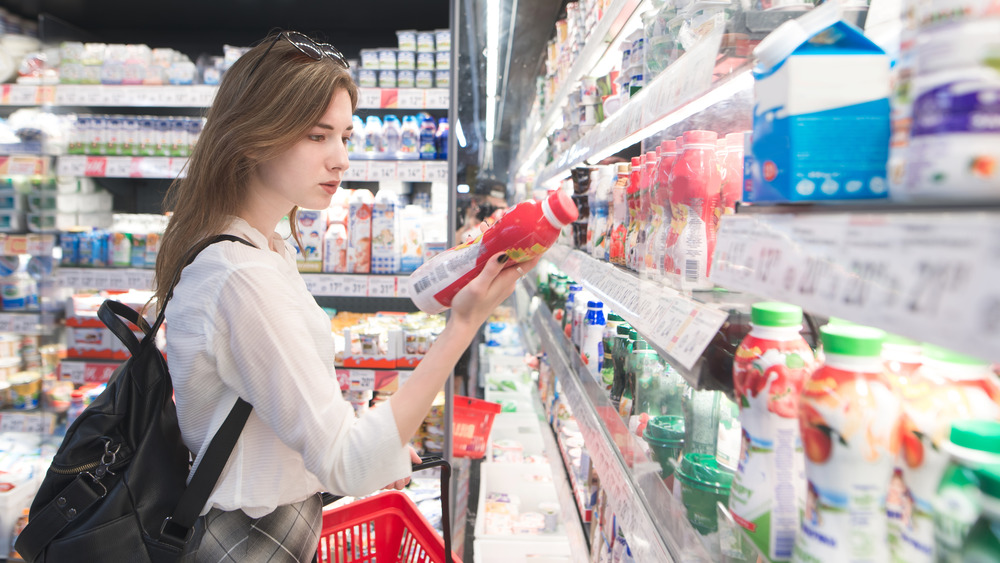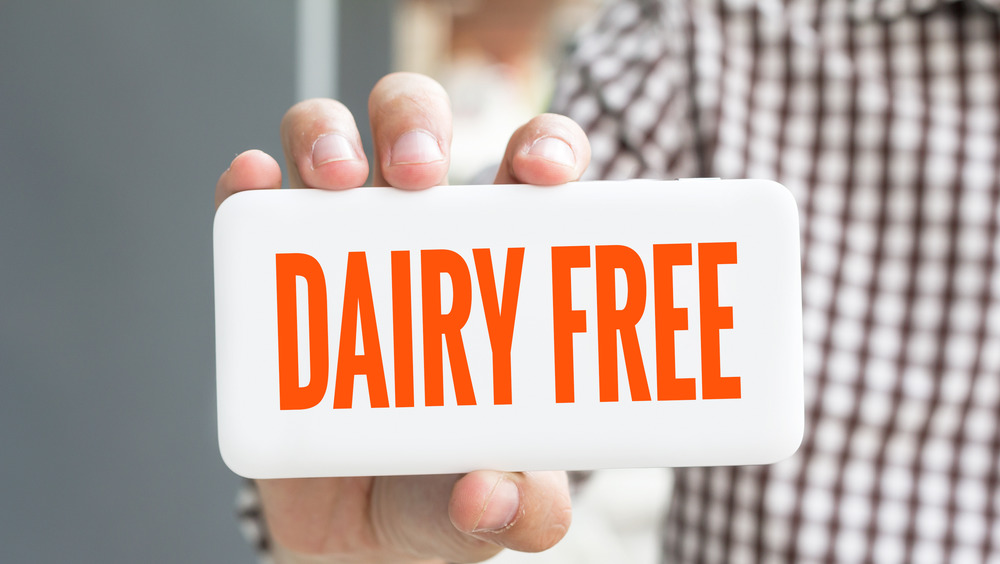Why Non-Dairy And Dairy-Free Don't Mean The Same Thing
In the confusing world of food labeling, there is enough gray area to give anyone a headache. Although the FDA does not generally allow the use of false or misleading claims on food labels, there is still plenty to be confused about.
Take the terms 'non-dairy' and 'dairy-free,' for example. You'd think they would both mean 'no dairy,' right? Well, think again. Even though the two terms are often used interchangeably, they do not mean the same thing.
The term 'dairy-free' is intended, by the FDA, to mean 'no dairy' (via GoDairyFree), and that is often the case. But since this term is not actually regulated by the FDA, you can't be absolutely sure without reading the ingredient list. For those with serious dairy allergies, it may be necessary to even go a step further and check the manufacturing process too, since cross-contamination can occur if the product is produced in a facility that also produces dairy-containing products.
The term 'non-dairy,' on the other hand, is actually regulated by the FDA, but, oddly enough, this label does allow for the use of milk proteins like casein, whey, and other milk derivatives (via The Spruce Eats). Non-dairy creamers and cheeses commonly contain these milk-derivatives, which means non-dairy items also may or may not actually be dairy-free. Again, the only way to know for sure is to check the labels.
'Non-dairy' doesn't always mean no dairy
Ginger Hultin, RD, a Seattle-based spokesperson for the Academy of Nutrition and Dietetics, told The Healthy, "Non-dairy products can still have milk protein like casein and whey. Both of these can cause allergic reactions." And by the way, 'lactose-free' products don't get a pass for those with dairy allergies either, since they can still contain milk proteins. "These products are safe for people with lactose intolerance but unsafe for people with dairy allergies," says Chrissy Caroll, RD, author of Dairy-Free Cookbook for Beginners and owner of the website Dairy Free for Baby.
Don't worry about labels 'hiding' ingredients though. Non-dairy foods that contain dairy derivatives (known as caseinates) must have the ingredient source listed in parentheses; for example, 'sodium caseinate (milk).'
Since 65 percent of us have a lowered ability to digest the milk sugar lactose, and dairy allergies are not that uncommon, understanding the distinctions among these food labels is important for those that really need to avoid all dairy for health reasons.


